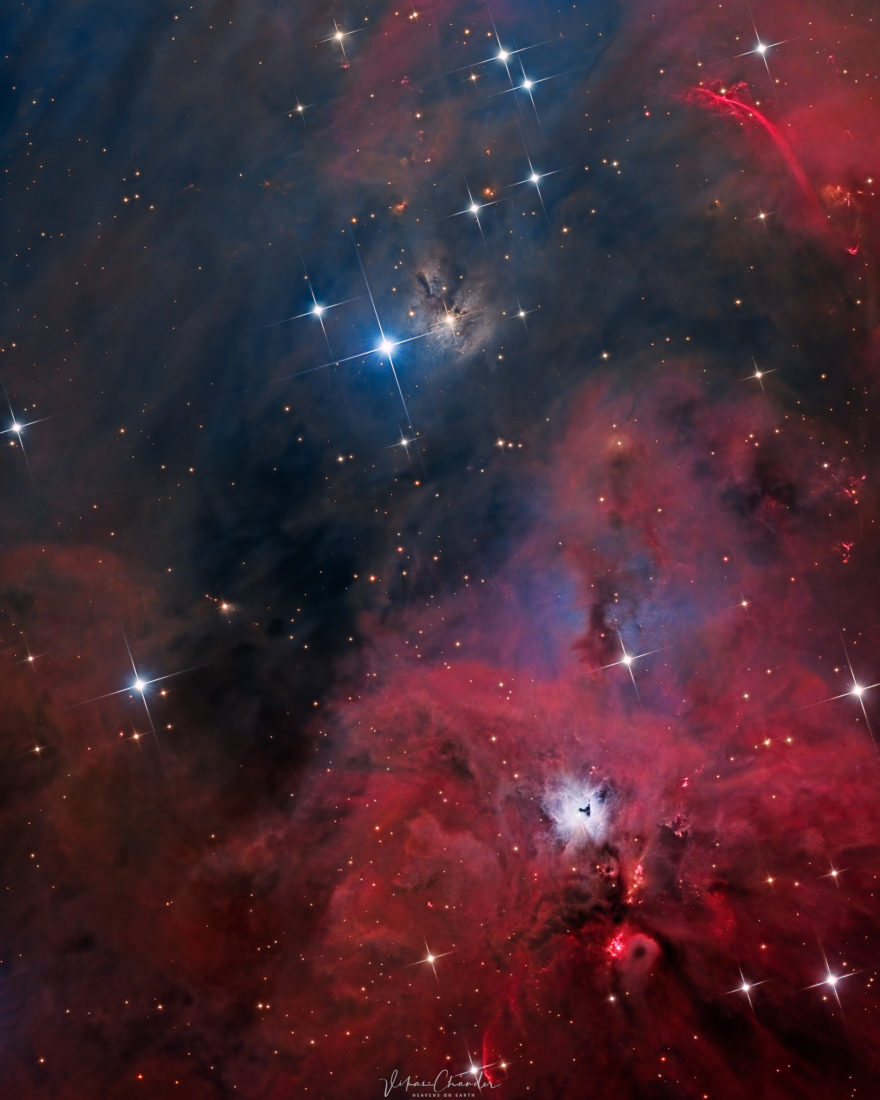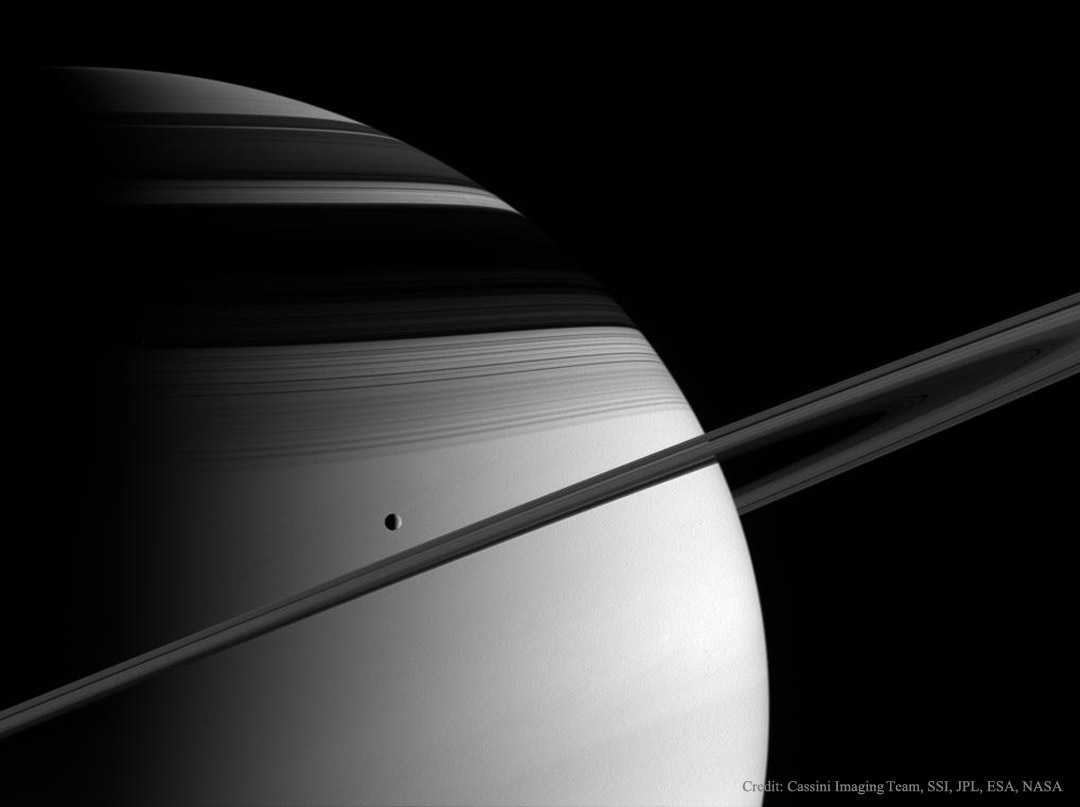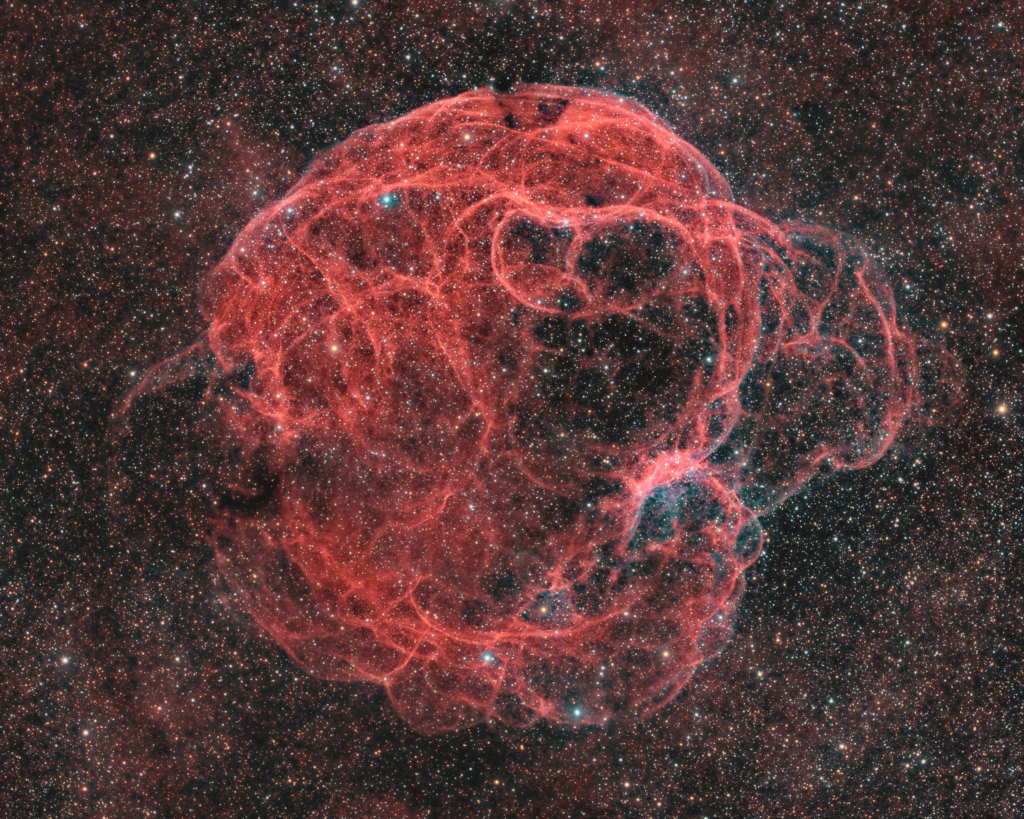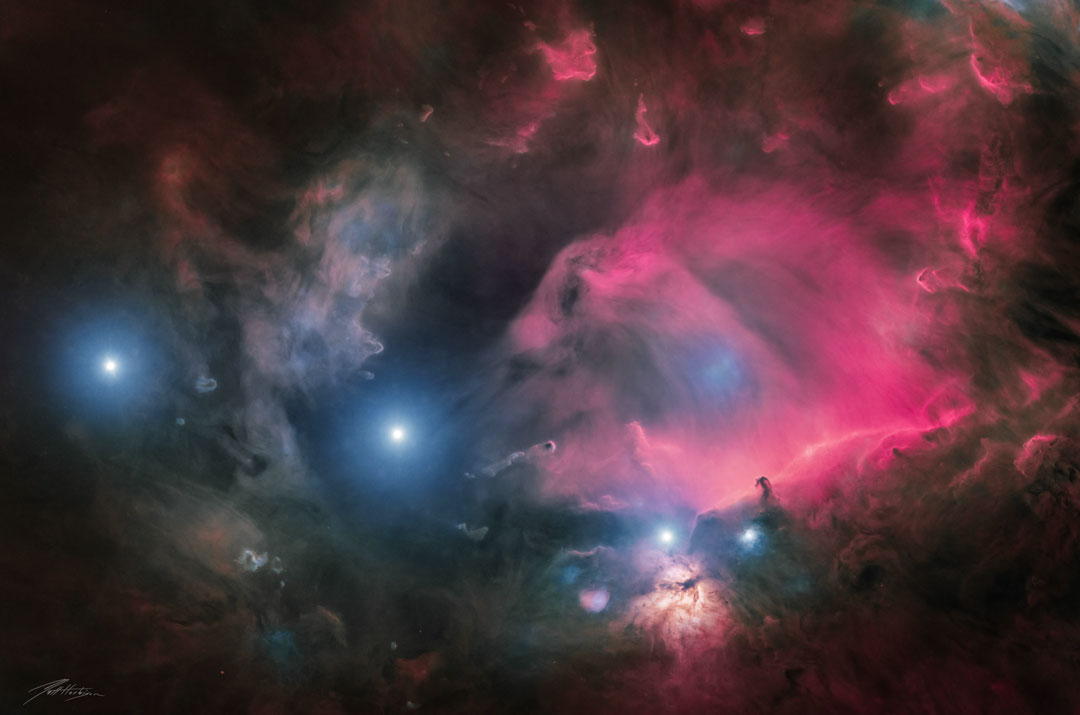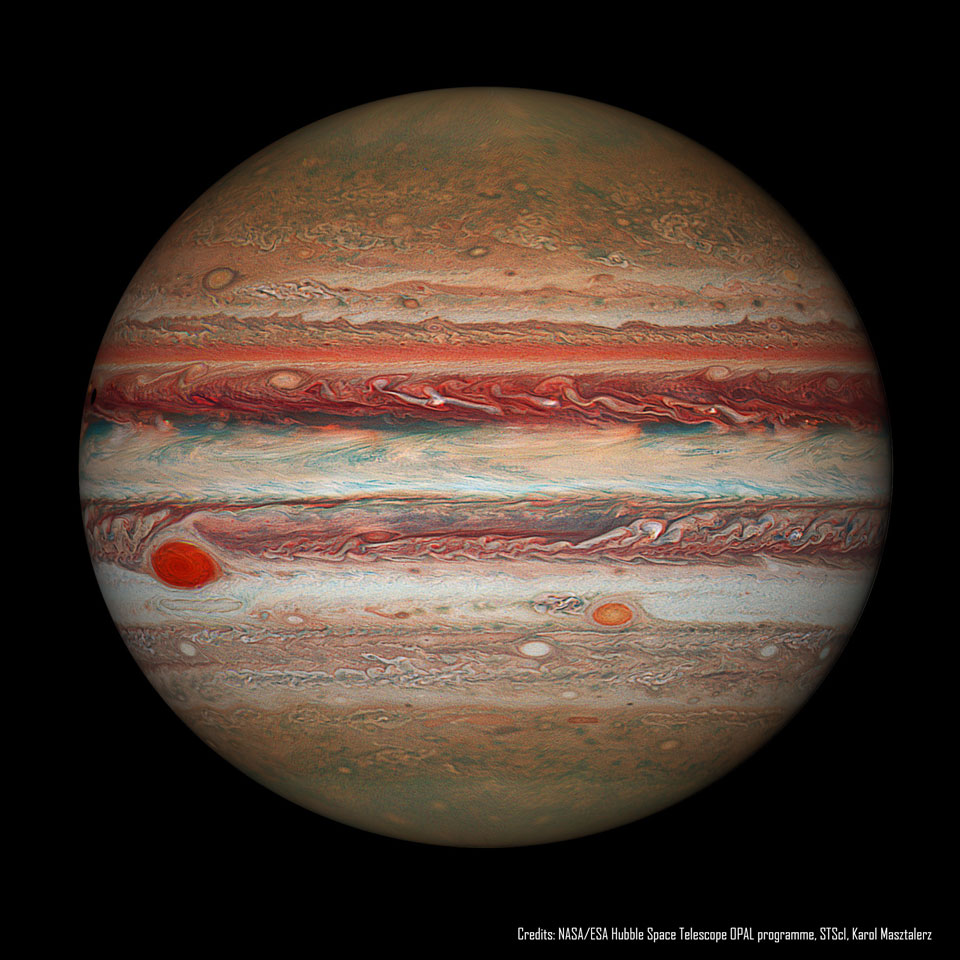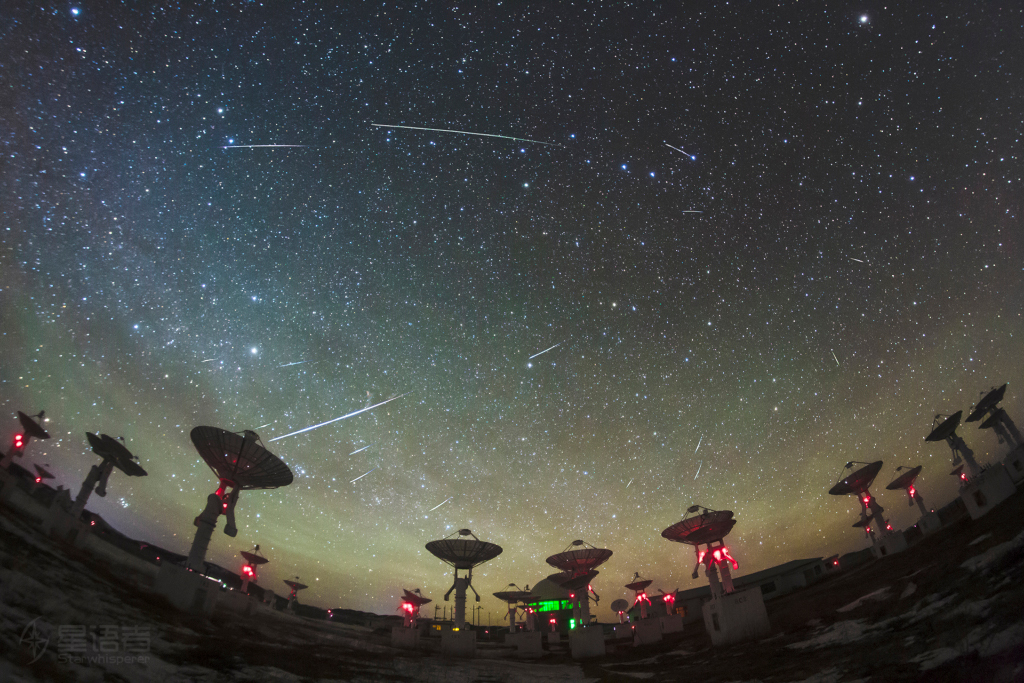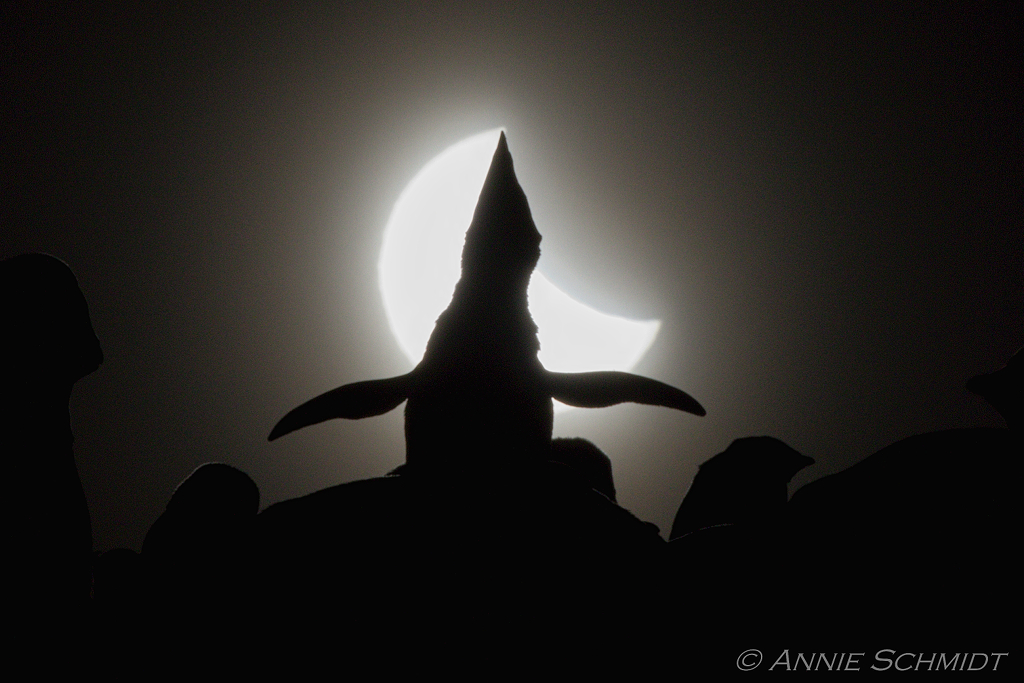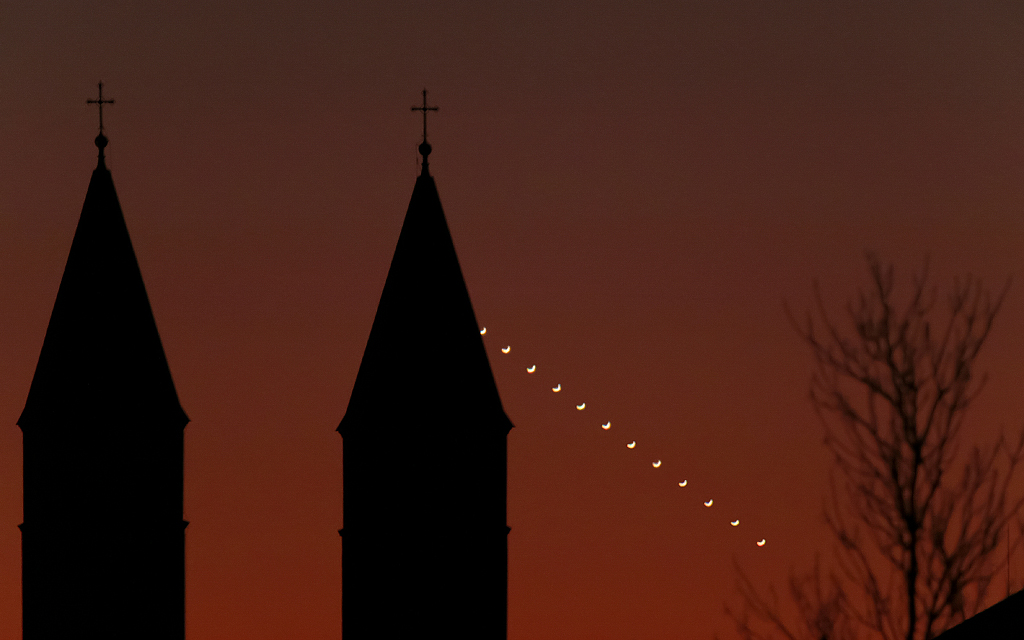Nombre total de pages vues
31/01/2022
MICROPHOTOGRAPHIE - Mélange à base d'acide citrique
30/01/2022
ART FRACTAL - Fractale naturelle de cristal de gallium
AERONAUTIQUE - Avions de légende - Airbus A380
ASTRONOMY - A solar prominence from SOHO
2022 January 30
Image Credit: NASA, ESA, SOHO-EIT Consortium
Explanation: How can gas float above the Sun? Twisted magnetic fields arching from the solar surface can trap ionized gas, suspending it in huge looping structures. These majestic plasma arches are seen as prominences above the solar limb. In 1999, this dramatic and detailed image was recorded by the Extreme ultraviolet Image Telescope (EIT) on board the space-based SOHO observatory in the light emitted by ionized Helium. It shows hot plasma escaping into space as a fiery prominence breaks free from magnetic confinement a hundred thousand kilometers above the Sun. These awesome events bear watching as they can affect communications and power systems over 100 million kilometers away on planet Earth. In late 2020 our Sun passed the solar minimum of its 11-year cycle and is now showing increased surface activity.
29/01/2022
ASTRONOMY - Road to the Galactic Center
2022 January 29
Image Credit & Copyright: Michael Abramyan
Explanation: Does the road to our galaxy's center go through Monument Valley? It doesn't have to, but if your road does -- take a picture. In this case, the road is US Route 163 and iconic buttes on the Navajo National Reservation populate the horizon. The band of Milky Way Galaxy stretches down from the sky and appears to be a continuation of the road on Earth. Filaments of dust darken the Milky Way, in contrast to billions of bright stars and several colorful glowing gas clouds including the Lagoon and Trifid nebulas. The featured picture is a composite of images taken with the same camera and from the same location -- Forest Gump Point in Utah, USA. The foreground was taken just after sunset in early September during the blue hour, while the background is a mosaic of four exposures captured a few hours later.
28/01/2022
ASTRONOMY - Western moon, Eastern sea
2022 January 28
Image Credit & Copyright: Tom Glenn
Explanation: The Mare Orientale, Latin for Eastern Sea, is one of the most striking large scale lunar features. The youngest of the large lunar impact basins it's very difficult to see from an earthbound perspective. Still, taken during a period of favorable tilt, or libration of the lunar nearside, the Eastern Sea can be found near top center in this sharp telescopic view, extremely foreshortened along the Moon's western edge. Formed by the impact of an asteroid over 3 billion years ago and nearly 1000 kilometers across, the impact basin's concentric circular features, ripples in the lunar crust, are a little easier to spot in spacecraft images of the Moon, though. So why is the Eastern Sea at the Moon's western edge? The Mare Orientale lunar feature was named before 1961. That's when the convention labeling east and west on lunar maps was reversed.
AERONAUTIQUE - Avions de légende - L'Antonov An-225
27/01/2022
ASTRONOMY - South of Orion
2022 January 27
Image Credit & Copyright: Vikas Chander
Explanation: South of the large star-forming region known as the Orion Nebula, lies bright blue reflection nebula NGC 1999. At the edge of the Orion molecular cloud complex some 1,500 light-years distant, NGC 1999's illumination is provided by the embedded variable star V380 Orionis. The nebula is marked with a dark sideways T-shape at center right in this telescopic vista that spans about two full moons on the sky. Its dark shape was once assumed to be an obscuring dust cloud seen in silhouette. But infrared data suggest the shape is likely a hole blown through the nebula itself by energetic young stars. In fact, this region abounds with energetic young stars producing jets and outflows with luminous shock waves. Cataloged as Herbig-Haro (HH) objects, named for astronomers George Herbig and Guillermo Haro, the shocks have intense reddish hues. HH1 and HH2 are just below and right of NGC 1999. HH222, also known as the Waterfall nebula, looks like a red gash near top right in the frame. To create the shocks stellar jets push through the surrounding material at speeds of hundreds of kilometers per second.
26/01/2022
MICROPHOTOGRAPHIE - Une pause sucrée salée
25/01/2022
ASTRONOMIE - La sonde Parker Solar a "touché" le soleil
NASA/JOHNS HOPKINS APL/BEN SMITH
Edition joanmira
MICROPHOTOGRAPHIE - acide citrique + décalcifiant = bijou à la mer
ASTRONOMY - Video: Comet Leonard over One Hour
2022 January 25
Video Credit & Copyright: Matipon Tangmatitham (NARIT); Text: Matipon Tangmatitham
Explanation: Which direction is this comet heading? Judging by the tail, one might imagine that Comet Leonard is traveling towards the bottom right, but a full 3D analysis shows it traveling almost directly away from the camera. With this perspective, the dust tail is trailed towards the camera and can only be seen as a short yellow-white glow near the head of the comet. The bluish ion tail, however, is made up of escaping ions that are forced directly away from the Sun by the solar wind -- but channeled along the Sun's magnetic field lines. The Sun's magnetic field is quite complex, however, and occasionally solar magnetic reconnection will break the ion tail into knots that are pushed away from the Sun. One such knot is visible in the featured one-hour time-lapse video captured in late December from Thailand. Comet Leonard is now fading as it heads out of our Solar System.
AERONAUTIQUE -.Avions de légende - Le Falcon 7X, un avion présidentiel
23/01/2022
ASTRONOMY - Saturn, Tethys, Rings and Shadows
2022 January 23
Image Credit: Cassini Imaging Team, SSI, JPL, ESA, NASA
Explanation: Seen from ice moon Tethys, rings and shadows would display fantastic views of the Saturnian system. Haven't dropped in on Tethys lately? Then this gorgeous ringscape from the Cassini spacecraft will have to do for now. Caught in sunlight just below and left of picture center in 2005, Tethys itself is about 1,000 kilometers in diameter and orbits not quite five saturn-radii from the center of the gas giant planet. At that distance (around 300,000 kilometers) it is well outside Saturn's main bright rings, but Tethys is still one of five major moons that find themselves within the boundaries of the faint and tenuous outer E ring. Discovered in the 1980s, two very small moons Telesto and Calypso are locked in stable along Tethys' orbit. Telesto precedes and Calypso follows Tethys as the trio circles Saturn.
21/01/2022
AERONAUTIQUE - Avions de légende - Le Mikoyan-Gourevitch MiG-21, un avion à réaction soviétique
MICROPHOTOGRAPHIE - L'acide malique : le plein de goût
20/01/2022
ASTRONOMY - NGC 7822 in Cepheus
2022 January 20
Image Credit & Copyright: Mark Carter
Explanation: Hot, young stars and cosmic pillars of gas and dust seem to crowd into NGC 7822. At the edge of a giant molecular cloud toward the northern constellation Cepheus, the glowing star forming region lies about 3,000 light-years away. Within the nebula, bright edges and dark shapes stand out in this colorful telescopic skyscape. The image includes data from narrowband filters, mapping emission from atomic oxygen, hydrogen, and sulfur into blue, green, and red hues. The emission line and color combination has become well-known as the Hubble palette. The atomic emission is powered by energetic radiation from the central hot stars. Their powerful winds and radiation sculpt and erode the denser pillar shapes and clear out a characteristic cavity light-years across the center of the natal cloud. Stars could still be forming inside the pillars by gravitational collapse but as the pillars are eroded away, any forming stars will ultimately be cutoff from their reservoir of star stuff. This field of view spans about 40 light-years at the estimated distance of NGC 7822.
18/01/2022
ASTRONOMY - From Orion to the Southern Cross
2022 January 18
Image Credit & Copyright: Lucy Yunxi Hu
Explanation: This is a sky filled with glowing icons. On the far left is the familiar constellation of Orion, divided by its iconic three-aligned belt stars and featuring the famous Orion Nebula, both partly encircled by Barnard's Loop. Just left of center in the featured image is the brightest star in the night: Sirius. Arching across the image center is the central band of our Milky Way Galaxy. On the far right, near the top, are the two brightest satellite galaxies of the Milky Way: the Large Magellanic Cloud (LMC), and the Small Magellanic Cloud (SMC). Also on the far right -- just above the cloudy horizon -- is the constellation of Crux, complete with the four stars that make the iconic Southern Cross. The featured image is a composite of 18 consecutive exposures taken by the same camera and from the same location in eastern Australia during the last days of last year. In the foreground, picturesque basalt columns of the Bombo Quarry part to reveal the vast Pacific
16/01/2022
ASTRONOMY - A Retreating Thunderstorm at Sunset
Image Credit & Copyright: Alan Dyer (The Amazing Sky)
Explanation: What type of cloud is that? This retreating cumulonimbus cloud, more commonly called a thundercloud, is somewhat unusual as it contains the unusual bumpiness of a mammatus cloud on the near end, while simultaneously producing falling rain on the far end. Taken in mid-2013 in southern Alberta, Canada, the cloud is moving to the east, into the distance, as the sun sets in the west, behind the camera. In the featured image, graphic sunset colors cross the sky to give the already photogenic cloud striking orange and pink hues. A darkening blue sky covers the background. Further in the distance, a rising, waxing, gibbous moon is visible on the far right.
AERONAUTIQUE - Le Blériot XI et la première traversée de la Manche en avion
15/01/2022
ASTRONOMY - Galileo's Europa
2022 January 15
Image Credit: NASA, JPL-Caltech, SETI Institute, Cynthia Phillips, Marty Valenti
Explanation: Looping through the Jovian system in the late 1990s, the Galileo spacecraft recorded stunning views of Europa and uncovered evidence that the moon's icy surface likely hides a deep, global ocean. Galileo's Europa image data has been remastered here, with improved calibrations to produce a color image approximating what the human eye might see. Europa's long curving fractures hint at the subsurface liquid water. The tidal flexing the large moon experiences in its elliptical orbit around Jupiter supplies the energy to keep the ocean liquid. But more tantalizing is the possibility that even in the absence of sunlight that process could also supply the energy to support life, making Europa one of the best places to look for life beyond Earth. What kind of life could thrive in a deep, dark, subsurface ocean? Consider planet Earth's own extreme shrimp.
13/01/2022
ART FRACTAL - Un joyau
ASTRONOMY - Supernova Remnant Simeis 147
2022 January 13
Image Credit & Copyright: Jason Dain
Explanation: It's easy to get lost following the intricate, looping, twisting filaments in this detailed image of supernova remnant Simeis 147. Also cataloged as Sharpless 2-240 it goes by the popular nickname, the Spaghetti Nebula. Seen toward the boundary of the constellations Taurus and Auriga, it covers nearly 3 degrees or 6 full moons on the sky. That's about 150 light-years at the stellar debris cloud's estimated distance of 3,000 light-years. This composite includes image data taken through narrow-band filters where reddish emission from ionized hydrogen atoms and doubly ionized oxygen atoms in faint blue-green hues trace the shocked, glowing gas. The supernova remnant has an estimated age of about 40,000 years, meaning light from the massive stellar explosion first reached Earth 40,000 years ago. But the expanding remnant is not the only aftermath. The cosmic catastrophe also left behind a spinning neutron star or pulsar, all that remains of the original star's core.
12/01/2022
ASTRONOMY - Comet Leonard Closeup from Australia
2022 January 12
Image Credit & Copyright: Blake Estes (itelescope.net)
Explanation: What does Comet Leonard look like up close? Although we can't go there, imaging the comet's coma and inner tails through a small telescope gives us a good idea. As the name implies, the ion tail is made of ionized gas -- gas energized by ultraviolet light from the Sun and pushed outward by the solar wind. The solar wind is quite structured and sculpted by the Sun's complex and ever changing magnetic field. The effect of the variable solar wind combined with different gas jets venting from the comet's nucleus accounts for the tail's complex structure. Following the wind, structure in Comet Leonard's tail can be seen to move outward from the Sun even alter its wavy appearance over time. The blue color of the ion tail is dominated by recombining carbon monoxide molecules, while the green color of the coma surrounding the head of the comet is created mostly by a slight amount of recombining diatomic carbon molecules. Diatomic carbon is destroyed by sunlight in about 50 hours -- which is why its green glow does not make it far into the ion tail. The featured imagae was taken on January 2 from Siding Spring Observatory in Australia. Comet Leonard, presently best viewed from Earth's Southern Hemisphere, has rounded the Sun and is now headed out of the Solar System.
MICROPHOTOGRAPHIE - Marek Mis - Un mélange à base d'hématoxyline qui fait des étincelles
11/01/2022
SANTé/MEDECINE - Remèdes naturels - Soulager l'Arthrose et Toute Douleur Inflammatoire
 |
| Arthrose |
- 1. Le curcuma La curcumine, l’élément actif qui compose cette épice, a un pouvoir de guérison.
- 2. Le gingembre Préparez un thé avec cette racine.
- 3. Les oméga-3 Essayez les graines de lin moulues, les graines de chia entières et les graines de chanvre.
- 4. Les cerises Elles contiennent des substances appelées anthocyanosides qui sont très efficaces pour diminuer le niveau d’acide urique.
- 5. L’ananas Il contient de la bromélaïne anti-inflammatoire.
- 6. Le vinaigre de cidre Mélangez une cuillère à soupe de vinaigre de cidre à 100 à 200 ml d’eau purifiée et faites tremper vos mains douloureuses.
ASTRONOMY - Orion's Belt Region in Gas and Dust
2022 January 11
Image Credit & Copyright: Matt Harbison (Space4Everybody), Marathon Remote Imaging Observatory
Explanation: You may have seen Orion's belt before -- but not like this. The three bright stars across this image are, from left to right, Mintaka, Alnilam, and Alnitak: the iconic belt stars of Orion. The rest of the stars in the frame have been digitally removed to highlight the surrounding clouds of glowing gas and dark dust. Some of these clouds have intriguing shapes, including the Horsehead and Flame Nebulas, both near Alnitak on the lower right. This deep image, taken last month from the Marathon Skypark and Observatory in Marathon, Texas, USA, spans about 5 degrees, required about 20 hours of exposure, and was processed to reveal the gas and dust that we would really see if we were much closer. The famous Orion Nebula is off to the upper right of this colorful field. The entire region lies only about 1,500 light-years distant and so is one of the closest and best studied star formation nurseries known.
10/01/2022
MINERAUX - L’arsenic rouge, un minéral d’artiste
ASTRONOMY - Comet Leonard's tail wag
2022 January 10
Image Credit: NASA, NRL, STEREO-A; Processing: B. Gallagher
Explanation: Why does Comet Leonard's tail wag? The featured time-lapse video shows the ion tail of Comet C/2021 A1 (Leonard) as it changed over ten days early last month. The video was taken by NASA's Solar Terrestrial Relations Observatory-Ahead (STEREO-A) spacecraft that co-orbits the Sun at roughly the same distance as the Earth. Each image in this 29-degree field was subtracted from following image to create frames that highlight differences. The video clearly shows Comet Leonard's long ion tail extending, wagging, and otherwise being blown around by the solar wind -- a stream of fast-moving ions that stream out from the Sun. Since the video was taken, Comet Leonard continued plunging toward the Sun, reached its closest approach to the Sun between the orbits of Mercury and Venus, survived this closest approach without breaking apart, and is now fading as heads out of our Solar System.
09/01/2022
MICROPHOTOGRAPHIE - Marek Mis - Un vin rouge comme vous ne l’avez jamais imaginé
ASTRONOMY - Hubble's Jupiter and the Shrinking Great Red Spot
2022 January 9
Image Credit: NASA, ESA, Hubble, OPAL Program, STScI; Processing: Karol Masztalerz
Explanation: What will become of Jupiter's Great Red Spot? Gas giant Jupiter is the solar system's largest world with about 320 times the mass of planet Earth. Jupiter is home to one of the largest and longest lasting storm systems known, the Great Red Spot (GRS), visible to the left. The GRS is so large it could swallow Earth, although it has been shrinking. Comparison with historical notes indicate that the storm spans only about one third of the exposed surface area it had 150 years ago. NASA's Outer Planets Atmospheres Legacy (OPAL) program has been monitoring the storm more recently using the Hubble Space Telescope. The featured Hubble OPAL image shows Jupiter as it appeared in 2016, processed in a way that makes red hues appear quite vibrant. Modern GRS data indicate that the storm continues to constrict its surface area, but is also becoming slightly taller, vertically. No one knows the future of the GRS, including the possibility that if the shrinking trend continues, the GRS might one day even do what smaller spots on Jupiter have done -- disappear completely.
08/01/2022
AERONAUTIQUE - Avions de légende - Le Fouga Magister, l’emblème de la Patrouille de France
ASTRONOMY - Quadrantids of the North
2022 January 8
Image Credit & Copyright: Cheng Luo
Explanation: Named for a forgotten constellation, the Quadrantid Meteor Shower puts on an annual show for planet Earth's northern hemisphere skygazers. The shower's radiant on the sky lies within the old, astronomically obsolete constellation Quadrans Muralis. That location is not far from the Big Dipper, at the boundaries of the modern constellations Bootes and Draco. In fact north star Polaris is just below center in this frame and the Big Dipper asterism (known to some as the Plough) is above it, with the meteor shower radiant to the right. Pointing back toward the radiant, Quadrantid meteors streak through the night in the panoramic skyscape, a composite of images taken in the hours around the shower's peak on January 4, 2022. Arrayed in the foreground are radio telescopes of the Chinese Spectral Radioheliograph, Mingantu Observing Station, Inner Mongolia, China. A likely source of the dust stream that produces Quadrantid meteors was identified in 2003 as an asteroid.
07/01/2022
ASTRONOMY - Ecstatic Solar Eclipse
2022 January 7
Image Credit & Copyright: Annie Schmidt (Point Blue Conservation Science)
Explanation: A male Adelie penguin performed this Ecstatic Vocalization in silhouette during the December 4 solar eclipse, the final eclipse of 2021. Of course his Ecstatic Vocalization is a special display that male penguins use to claim their territory and advertise their condition. This penguin's territory, at Cape Crozier Antarctica, is located in one of the largest Adelie penguin colonies. The colony has been studied by researchers for over 25 years. From there, last December's eclipse was about 80 percent total when seen at its maximum phase as the Moon's shadow crossed planet Earth's southernmost continent.
MICROPHOTOGRAPHIE - Marek Mis - Lorsque la vitamine C invite à la rêverie
06/01/2022
ASTRONOMY - The Last Days of Venus as the Evening Star
2022 January 6
Image Credit & Copyright: Tamas Ladanyi (TWAN)
Explanation: That's not a young crescent Moon posing behind cathedral towers after sunset. It's Venus in a crescent phase. About 40 million kilometers away and about 2 percent illuminated by sunlight, it was captured with camera and telephoto lens in this series of exposures as it set in western skies on January 1 from Veszprem, Hungary. The bright celestial beacon was languishing in the evening twilight, its days as the Evening Star coming to a close as 2022 began. But it was also growing larger in apparent size and becoming an ever thinner crescent in telescopic views. Heading toward a (non-judgemental) inferior conjunction, the inner planet will be positioned between Earth and Sun on January 9 and generally lost from view in the solar glare. A crescent Venus will soon reappear though. Rising in the east by mid-month just before the Sun as the brilliant Morning Star.
AERONAUTIQUE - Avions de légende - Le Lockheed SR-71 Blackbird
SANTE/MEDECINE - Comment mieux dormir - 3. Dînez léger
05/01/2022
ASTRONOMY - A Year of Sunrises
Image Credit & Copyright: Luca Vanzella
Explanation: Does the Sun always rise in the same direction? No. As the months change, the direction toward the rising Sun changes, too. The featured image shows the direction of sunrise every month during 2021 as seen from the city of Edmonton, Alberta, Canada. The camera in the image is always facing due east, with north toward the left and south toward the right. As shown in an accompanying video, the top image was taken in 2020 December, while the bottom image was captured in 2021 December, making 13 images in total. Although the Sun always rises in the east in general, it rises furthest to the south of east on the December solstice, and furthest north of east on the June solstice. In many countries, the December Solstice is considered an official change in season: for example the first day of winter in the North. Solar heating and stored energy in the Earth's surface and atmosphere are near their lowest during winter, making the winter season the coldest of the year.
04/01/2022
ASTRONOMY - Moons behind rings of Saturn
2022 January 4
Image Credit: NASA, ESA, JPL, Cassini Imaging Team
Explanation: What's happened to that moon of Saturn? Nothing -- Saturn's moon Rhea is just partly hidden behind Saturn's rings. In 2010, the robotic Cassini spacecraft then orbiting Saturn took this narrow-angle view looking across the Solar System's most famous rings. Rings visible in the foreground include the thin F ring on the outside and the much wider A and B rings just interior to it. Although it seems to be hovering over the rings, Saturn's moon Janus is actually far behind them. Janus is one of Saturn's smaller moons and measures only about 180 kilometers across. Farther out from the camera is the heavily cratered Rhea, a much larger moon measuring 1,500 kilometers across. The top of Rhea is visible only through gaps in the rings. After more than a decade of exploration and discovery, the Cassini spacecraft ran low on fuel in 2017 and was directed to enter Saturn's atmosphere, where it surely melted.
03/01/2022
ASTRONOMY - Comet Leonard's Long Tail
2022 January 3
Image Credit & Copyright: Jan Hattenbach
Explanation: You couldn't see Comet Leonard’s extremely long tail with a telescope — it was just too long. You also couldn't see it with binoculars — still too long. Or with your eyes -- it was too dim. Or from a city — the sky was too bright. But from a dark location with a low horizon — your camera could. And still might -- if the comet survives today's closest encounter with the Sun, which occurs between the orbits of Mercury and Venus. The featured picture was created from two deep and wide-angle camera images taken from La Palma in the Canary Islands of Spain late last month. Afterwards, if it survives, what is left of Comet Leonard's nucleus will head out of our Solar System, never to return.
02/01/2022
ASTRONOMY - Quadruple Lunar Halo Over Winter Road
2022 January 2
Image Credit & Copyright: Dani Caxete
Explanation: Sometimes falling ice crystals make the atmosphere into a giant lens causing arcs and halos to appear around the Sun or Moon. One Saturday night in 2012 was just such a time near Madrid, Spain, where a winter sky displayed not only a bright Moon but four rare lunar halos. The brightest object, near the top of the featured image, is the Moon. Light from the Moon refracts through tumbling hexagonal ice crystals into a somewhat rare 22-degree halo seen surrounding the Moon. Elongating the 22-degree arc horizontally is a more rare circumscribed halo caused by column ice crystals. Even more rare, some moonlight refracts through more distant tumbling ice crystals to form a (third) rainbow-like arc 46 degrees from the Moon and appearing here just above a picturesque winter landscape. Furthermore, part of a whole 46-degree circular halo is also visible, so that an extremely rare -- especially for the Moon -- quadruple halo was captured. Far in the background is a famous winter skyscape that includes Sirius, the belt of Orion, and Betelgeuse -- visible between the inner and outer arcs. Halos and arcs typically last for minutes to hours, so if you do see one there should be time to invite family, friends or neighbors to share your unusual lensed vista of the sky.
ASTRONOMY - Orion and the Ocean of Storms
2025 December 13 Orion and the Ocean of Storms Image Credit: NASA , Artemis 1 Explanation: On December 5, 2022, a camera on board the u...

-
2022 September 26 All the Water on Planet Earth Illustration Credit: Jack Cook, Adam Nieman, Woods Hole Oceanographic Institution ; Data ...
-
2025 May 11 The Surface of Venus from Venera 14 Image Credit: Soviet Planetary Exploration Program , Venera 14 ; Processing & Copyri...







